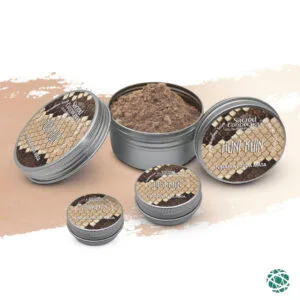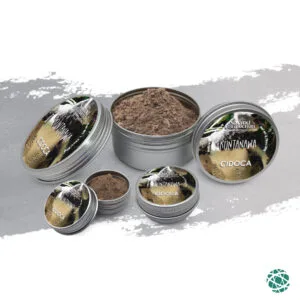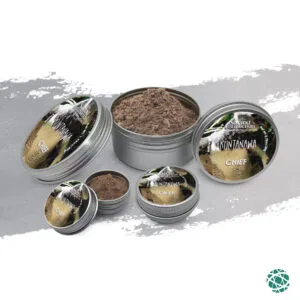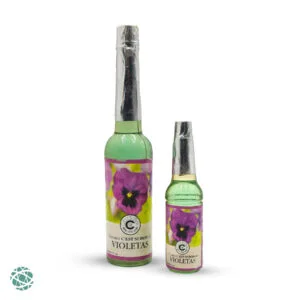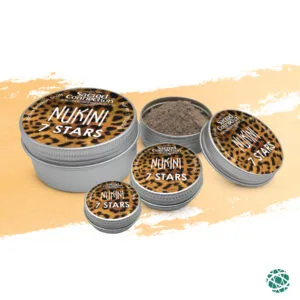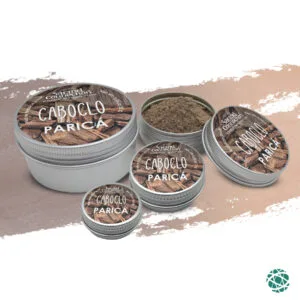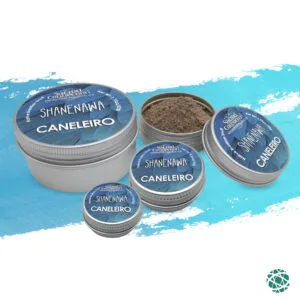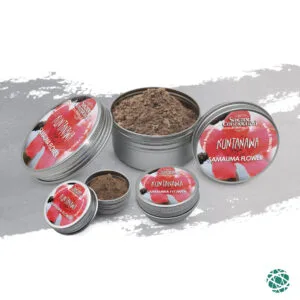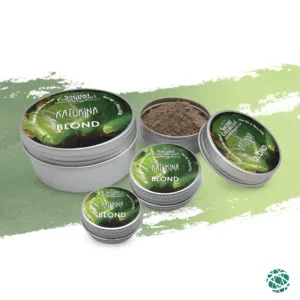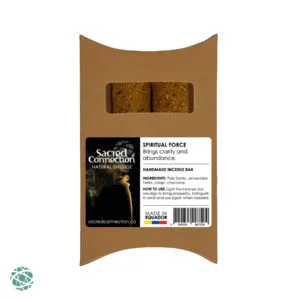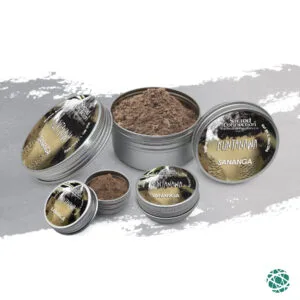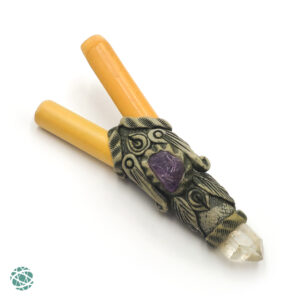For the past few years we have been working closely with chief Fernando Katukina, leader of his people. We have been helping to realize projects in their community. His family has been supplying us with Katukina medicines and handicrafts.
To the great sadness of all who knew him he passed away earlier this year. We continue working with his family.
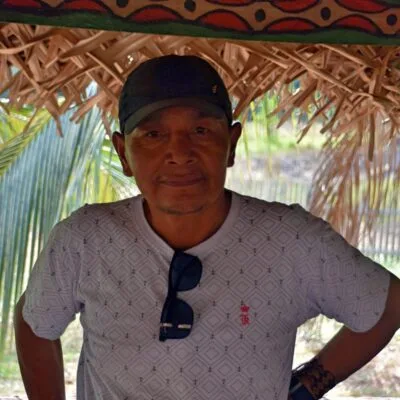
The Katukina live divided over two tribal lands. The first is the Gregório river where they live with the Yawanawa with whom they have many family links. The second is Campinas river, close to Cruzeiro do Sul. An interesting fact is that although they live close to the road, with all the external influence that brings, they still have their language intact. Nearly all the Pano tribes, apart from the Huni Kuin, have lost most of their language and the youth hardly speaks any. The Katukina, on the other hand, mostly speak their own Pano language, and only learn Portuguese when they are around eight years old. Many of the women and elders hardly speak any Portuguese.
Name
Defining who the Katukina are on the basis of their name alone is not an easy task. Since the first half of the 19th century, historical records produced by missionaries, travellers and government agents concerning the indigenous peoples of the Juruá river refer to all the known indigenous groups by the name Katukina. According to the anthropologist Paul Rivet ‘Katukina’ – or Catuquina, Katokina, Katukena, Katukino – is a generic term that came to be attributed to five linguistically distinct and geographically proximate groups (Rivet 1920). Today this number is reduced to three: one from the Katukina linguistic family in the region of the Jutaí river in Amazonas state, and two from the Pano linguistic family in Acre state.
Neither of the two Pano groups known by the name ‘Katukina’ recognize the word as a self-designation. Members of one of the groups, located by the shores of the Envira river close to the town of Feijó, prefer to be known as Shanenawa, their own name for themselves. Those from the other group do not recognize any meaning to ‘Katukina’ in their own language, but have nonetheless adopted it, saying that the designation was in fact ‘given by the government.’
This text relates to the latter group only. The name ‘Katukina’ came to be accepted by members of their two villages on the Campinas and Gregório rivers, who do not possess a common ethnic designation. The only existing self-designations which are widely accepted refer to the six clans into which they divide: Varinawa (people of the Sun), Kamanawa (people of the Jaguar), Satanawa (people of the Otter), Waninawa (people of the Peachpalm), Nainawa (people of the Sky) and Numanawa (people of the Dove). It is worth noting that apart from the Nainawa, these denominations are identical to the names of some sections of the Marúbo people.
Katukina language
The Katukina language belongs to the Pano linguistic family. Nasalization is one of its notable features. Most of the words are disyllabic and oxytonic and new words are formed by combining two words or including one or more suffixes. Personal pronouns make no distinction between gender. All the Katukina speak their own language when talking among themselves. Portuguese is only used to converse with non-Indians. Despite their long period of contact with the latter, less than half the Katukina population is fluent in Portuguese.
The language spoken by the Katukina of the Campinas and Gregório rivers presents significant differences in relation to the language spoken by the Shanenawa.
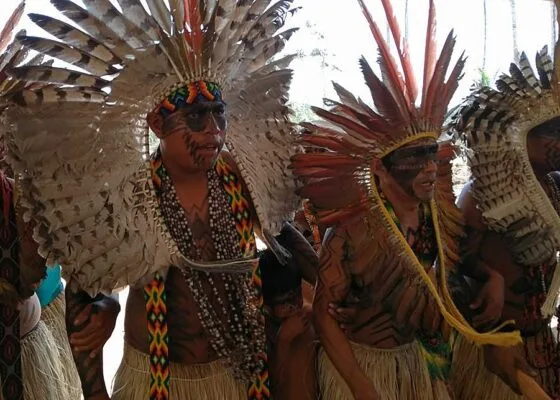
History of Contact with the Whites
Like the other indigenous groups of the upper Juruá region, the Katukina were effectively surrounded when the economic exploration of the region began around 1880 with the extraction of native rubber. The region which they inhabited, rich in gum trees (Castilloa elastica) and rubber trees (Hevea brasiliensis), was quickly invaded by Peruvians and Brazilians arriving from opposite sides of their territory. The presence of the former was brief, since they went in search of gum, a product obtained by felling the trees which were consequently rapidly depleted. In contrast, the Brazilian rubber tappers settled permanently in the area, since the regular surface cuts made in the trunk of the Hevea brasiliensis allowed the extraction of rubber over a long period.
The Katukina lived through a period marked by constant relocations during their first years of contact with Whites, attempting to escape alive from the ‘correrias’ organized by the Peruvian gum extractors and Brazilian rubber tappers – incursions aimed at eliminating the indigenous populations in order to provide uninhibited access to the rubber trees. As they fled the correrias, the Katukina were scattered throughout the region. With no means of keeping themselves intact as a group, they became dispersed throughout the forest, living on game, wild plant produce and raids on the plantations they came across during their travels, since they were no longer able to make their own swiddens: these would have provided an easy trail inevitably leading the Whites to them. Moreover, the constant relocations were also impelled by the belief that the spirits of the dead, pining their kin, could come to earth in search of the living.
The correrias came to an end in the first decade of the 20th century, in part due to the depletion of the gum trees which had been felled, but also due to the border conflicts between Brazil and Peru, which were resolved by treaty in 1909. A fall in the price of rubber on the international market in 1912 also contributed to cessation of the correrias. Although over, the Katukina retain horrific memories of these events transmitted by their parents and grandparents, recollections telling of flights and separations in the forest, filled with images of mutilated bodies and marked by violence.
As the region became populated by non-Indians, the Katukina witnessed both the territory in which they lived and their population drastically reduced – and here we must also take into account the population losses arising from diseases which had not existed among them in the past. Faced with no alternative, the Katukina ended up working in rubber extraction, but continued to be dispersed across the region, since it became usual for each nuclear family to settle to work in a different rubber zone. This obviously caused a rupture in their society, since they were no longer able to organize and share their lives in accordance with their own principles and sociocultural values.
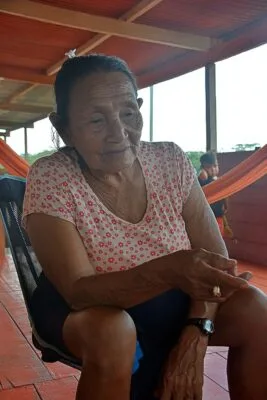
In this to-and-fro between rivers and rubber zones, the reference point was always the Gregório river, or more precisely the Sete Estrelas (Seven Stars) rubber plantation, a place to which the Katukina invariably returned after varying periods in different locations. The moves from one river or rubber area to another are part of Katukina memory. The main areas they passed through were the Sete Estrelas and Cashinahua rubber plantations on the Gregório river, Universo on the Tarauacá, and Guarani and Bom Futuro on the smaller Liberdade river.
During the 1950s there was a break in the constant dislocations and the majority of the Katukina – though not all of them – were reunited at the Sete Estrelas rubber plantation. The group was split in the following decade as a result firstly of misunderstandings between the Katukina, their chief and the new owner of the rubber plantation for whom they were working, and secondly due to disputes with the Yawanawá, a neighbouring Pano indigenous group from the Gregório river, with whom relations had always oscillated between open hostility and reserved friendship. Seeking a new boss and wary of the threat of conflicts with the Yawanawá, part of the group decided to look for another place to live. They eventually settled for about eight years at a rubber plantation close to the mouth of the smaller Liberdade river, on the frontier between Acre and Amazonas states.
The 1970s witnessed two events which contributed in a definitive form to the contemporary location of the villages: the opening of the BR-364 (Rio Branco-Cruzeiro do Sul) highway and the arrival of the New Tribes of Brazil Mission (Missão Novas Tribos do Brasil – MNTB) to begin working among the Katukina of the Gregório river. With the start of the construction works for the BR-364, part of the group which had settled during the previous decade close to the mouth of the Liberdade river relocated to work with the 7th BEC (Batalhão de Engenharia de Construção/Construction Engineering Battalion) in clearing forest for construction of the highway; they were also joined by other peoples from the Gregório river. After the clearance work was complete, the Katukina received permission from the 7th BEC to live alongside the highway, which they thought would be a good location due to the proximity to the town of Cruzeiro do Sul, an urban centre where – so they hoped – they would be able to sell what they produced easily and also obtain the industrialized goods they required. Those who returned to or remained in the village on the Gregório river, saw the missionaries of the MNTB as a potential regular source of medical and educational assistance.
It was only in the middle of the 1980s, after many years of wandering and relocations, that the Katukina were guaranteed their rights to possession of the territory where they lived, finally breaking the ties which had bound them to the rubber bosses.
Contact with Other Ethnic Groups
Throughout their history, the Katukina have maintained contact – peaceful or otherwise – with various indigenous groups in the Juruá river region and, more recently, with other groups from the Javari river basin. The Kulina, Yawanawá and Marúbo are the three groups with which contacts were and are the most intense and significant for the Katukina.
Contacts between the Katukina and the Kulina – speakers of an Arawá language who currently live in villages scattered along the Juruá and Purus rivers in Brazil and Peru – remained frequent at least until the 1960s. Members of the two groups used to meet mainly in order to perform specific rituals together. Nowadays, the Katukina and Kulina no longer meet, since the successive dislocations of the Kulina have meant the two groups now live far apart. However, the Katukina still recall the songs taught to them by the Kulina. These songs were incorporated into the Katukina musical repertoire and they still sing them today, despite being unable to understand the content of the songs.
Of the two Pano groups in the upper Juruá region, the Yawanawá are the Katukina’s closest and oldest neighbours and currently share the Gregório river territory with them.
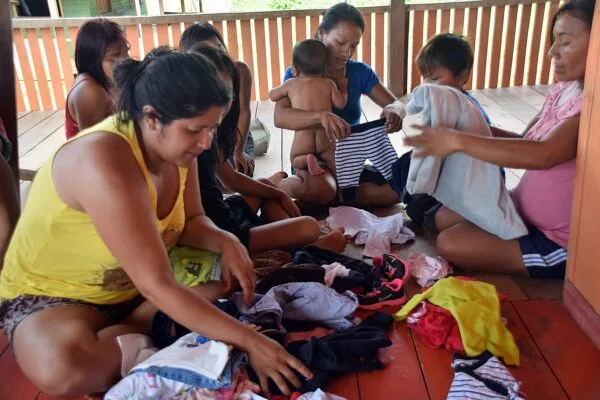
The Yawanawá were also their most assiduous adversaries. The Katukina accuse the Yawanawá of abducting their women in the past, thereby provoking warfare between them. Sorcery accusations – also frequent – continue until today. Despite the rivalry, the Katukina and Yawanawá do not confront each other the whole time. The joint performance of rituals, inter-marriages and co-residence, in both past times and the present, are fairly frequent among them. Ambivalence rather than pure and simple opposition acts as the baseline to their relations. So much so that the countless years of rivalry did not definitively push them apart, and during the 1980s the two groups actually united to demand joint demarcation of their lands.
A little more distant, the Marúbo have also maintained regular contacts with the Katukina, though only in recent years. Nevertheless, the brief time in close contact has not prevented the Marúbo from becoming the group with whom the Katukina most identify today.
The first encounter between the two groups seems to have occurred in the 1980s, when missionaries from the MNTB (who also work among the Marúbo on the Ituí river) took two Katukina living on the Gregório river to meet the Marúbo. However, this meeting appears to have led to nothing. Closer contact between the Katukina and the Marúbo happened only in the following decade, in 1992, following a chance encounter in the port of Cruzeiro do Sul. The Katukina were walking through the port area when they overheard some people speaking a language similar to their own and decided to approach. They introduced themselves, exchanged a few words and soon discovered they shared other aspects in common besides language. The main point of similarity was that some people among the Marúbo were also identified as Satanawa, Varinawa, Kamanawa, Waninawa and Numanawa. They swapped a number of presents during this encounter and arranged to meet again.
After the meeting in Cruzeiro do Sul, two Katukina visited the Marúbo villages on the Ituí river, and five Marúbo visited the village on the Campinas river. On the basis of these visits, the Katukina started to reflect on the similarities and differences between themselves and the Marúbo and the causes that could explain them. The main conclusion reached was that the Marúbo had made up the same group as the Katukina in the past. However, the separation between them occurred at a time when neither the contemporary Katukina and Marúbo, nor their parents and grandparents, had been born – and so this was long before they first encountered the Whites.
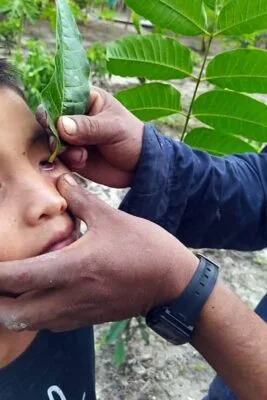
According to the Katukina, their similarities with the Márubo can be attested in various ways: the Marúbo are subdivided into a number of sections and some of these have the same denominations as those of their own clans; the Marúbo language is very similar to that of the Katukina; the communal houses in which the Marúbo live are similar to the houses in which they themselves lived before establishing contact with the Whites. The Katukina agree that the form in which the Marúbo live nowadays represents their own way of life in the past and the Marúbo are thus seen by them as a proto-Katukina society.
The Katukina Clans
As we saw previously, the Katukina divide into six clans: Varinawa, Kamanawa, Nainawa, Waninawa, Satanawa and Numanawa. These clans are organized on the basis of a principle of unifiliation. However, the Katukina are in disagreement here: while some assert matrilinearity, others assert patrilinearity.
There is a lively debate among the Katukina as to which principle of unifiliation is ‘correct.’ On one side, supporters of matrilinearity say they are more faithful to the past. On the other side, practitioners of patrilinearity openly recognize that there has been an inversion in the rule of filiation in recent years.
Dominating this discussion is the idea that a ‘correct’ or ‘pure’ principle exists that expresses the traditional order. Those who assert filiation along the maternal line look to the past for the model of this order and cite irrefutable genealogies to exemplify what they hold to be the ideal. However, those who nowadays contest this saying the Katukina are patrilineal also do so by seeking the same sense of ‘purity’ and tradition. But with an important detail: their chosen model is Cashinahua. Some Katukina say that about fifteen years ago, they discovered that the Cashinahua are patrilineal. As it had already been some time since anyone knew for sure how the ‘ancient ones’ lived, some of these Katukina decided to adopt patrilinearity following the Cashinahua pattern. The premise behind this borrowing is clear: if there is no consistent and unquestionable native ‘rule,’ it may be found elsewhere.
The issue of determining what in the end is the true principle of affiliation of the Katukina groupings remains open. The debate among them generates positions as disparate as they are interesting, since their common aspect is the claim that they lost something in contact with the Whites. Something that can only be regained by a return to their past selves, as defenders of matrilineal filiation wish, or by seeking the model that supposedly existed among the Katukina among other Pano peoples, as those who defend patrilineal filiation claim.
Although an overall lack of definition to the rule of filiation predominates, it is possible to define the internal groupings making up Katukina society as clans, since there is an underlying idea among the Katukina which may be called ‘supposed’ or ‘presumed’ ancestrality: in other words, the contemporary Varinawa are taken to be descendants of the ancient Varinawa, the Kamanawa of the ancient Kamanawa and so on.
It may be more useful to think of a ‘clanification process’ to the Katukina self-designations. As we saw, when the Katukina became aware of Cashinahua patrilinearity, a certain sense of loss of traditional organization had already taken place (normally blamed on the influence of Western values). By resorting to either of these forms of tracing filiation (maternal or paternal), the Katukina simply reinforce the idea of ‘ancestrality,’ but without directly combining it with other levels of social organization (as occurs with the Márubo, for example).


